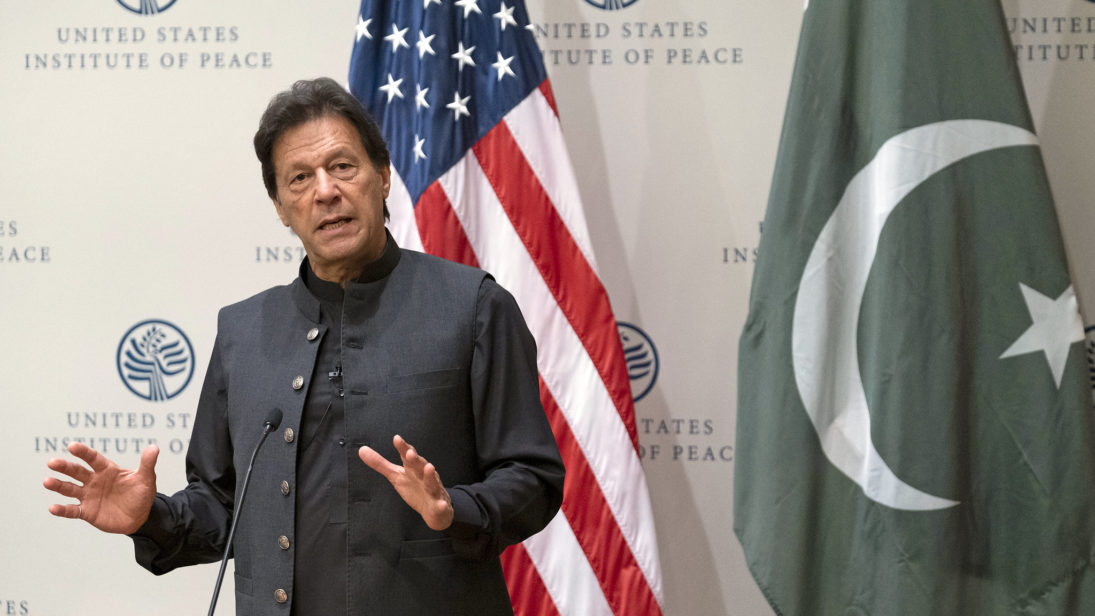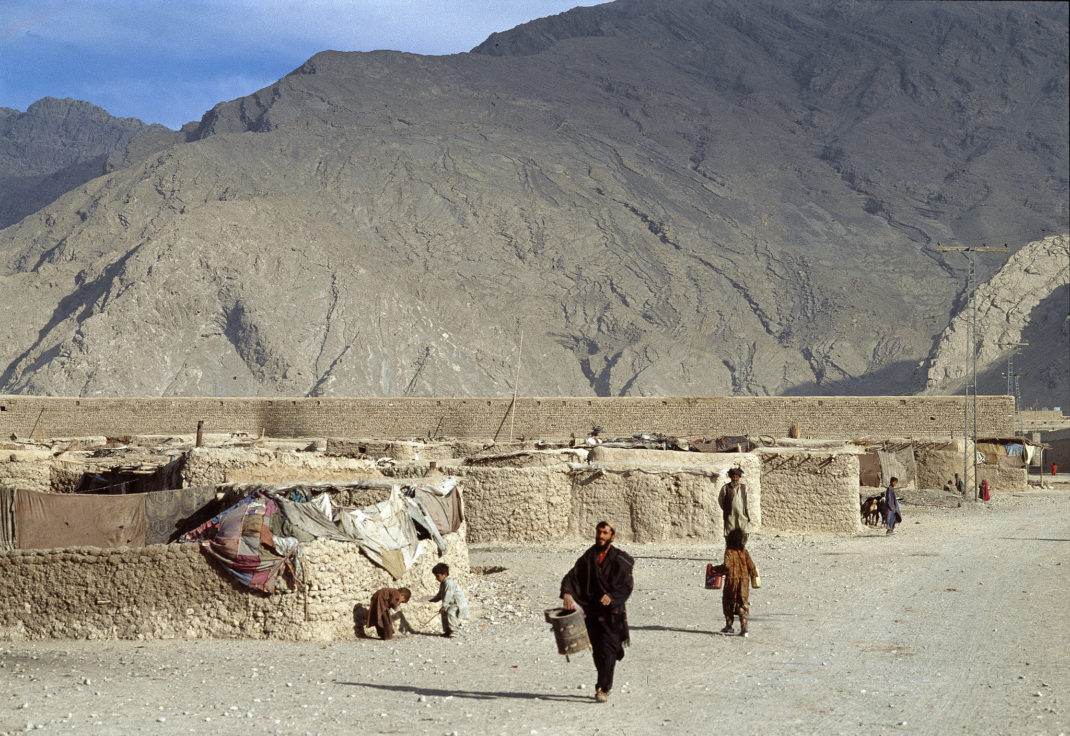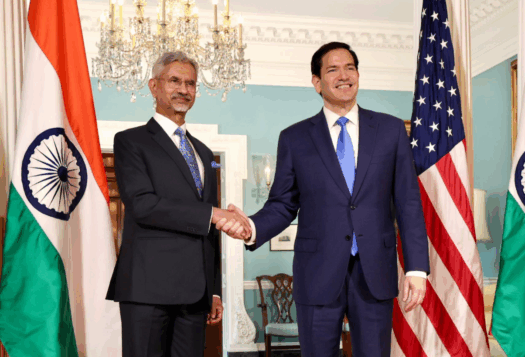
Pakistan’s foreign policy can be understood with respect to three impulses: the normative, statist, and structural. First, the normative impulse is a constitutive element of the Pakistani nation-state project, including ideological and self-definitional tropes such as culture, values, religion, and history based on its Islamic identity. The key question is to what extent Pakistan’s Islamic identity provides explanations for its foreign policy when international relations literature considers the national interest a more reliable predictor of foreign policy than identity or ideology. Second, the statist strand in Pakistan’s foreign policy demonstrates a path-dependent fixation on a traditional paradigm of security as a defense against external threats. These regional threat perceptions emanate from two of its immediate neighbors: from Afghanistan, via the Durand Line conflict; from India, over Kashmir, its core security problematique. Third, the structural impulse is indicative of policy inputs from the international system, and, specifically, great powers over which Pakistan exercises little control. The growing strategic rivalry between the United States and China, for instance, directly impacts Pakistan’s foreign policy as Pakistan attempts to navigate between the two powers without jeopardizing its relations with either of them. These three imperatives provide insight into Pakistan’s two key foreign policy goals: achieving economic redemption and regulating traditional security.
Normative dimensions in Pakistan foreign policy
Does Islam as a normative ideal provide a solid explanation for Pakistan’s foreign policy since independence or does foreign policy have to do more with the attainment of national interest objectives? The Islamic identity is often invoked as a key element in the first Prime Minister of Pakistan Liaquat Ali Khan’s side-stepping of an official invitation from the Soviet Union in 1949 and, instead, visiting the United States in May 1950 because the “godless” communist ideology of the Soviet Union tampered with Pakistan’s religious sensitivities. This ideological dimension was conveniently set aside when it came to China, the countervailing communist power. Pakistan recognized Communist China as early as 1950 and initiated bilateral relations with the Chinese state despite engagement in military defense alliances with the United States.
The interplay of Islamic identity and national interests is also apparent in Pakistan’s outreach to the Muslim world. This outreach was patchy in the initial years as Pakistan’s national interest dictated a pro-Western foreign policy and a less enthusiastic response to Arab nationalism. In 1956, Pakistan’s Prime Minister Husain Shaheed Suhrawardy, lamenting on the state of the Muslim world, reiterated: “zero plus zero plus zero plus zero is after all equal to that, zero.”
National interest dictating foreign policy choices is a theme both for Pakistan and also for the Muslim states Pakistan has invoked as its allies after India revoked Article 370 granting Jammu and Kashmir semi-autonomous status in August 2019. The Pakistani Foreign Minister recently blamed Saudi Arabia for its lack of support for convening a special session of the Organisation of Islamic Cooperation on Kashmir, which came after it reduced its aid for Pakistan. This is a small example of how normative idealism—solidarity, as a Muslim-majority country, with Pakistan in its stance on Muslim-majority Kashmir—matters increasingly less in foreign policymaking. This, combined with the Muslim countries’ pursuit of peace with Israel, indicates changing strategic realities that Pakistan’s foreign policy must contend with in the future.
While threats persist, the key question is whether Pakistan can move beyond these to build more favorable engagements with its neighboring states, specifically India and Afghanistan.
The security dynamic
Pakistan’s search for security—understood in the classical realist sense—involves the politics of national survival, territorial integrity, military empowerment, and an excessive, if not exclusive, concern with threats. In the immediate aftermath of independence, secessionist fears in Khyber Pakhtunkhwa (formerly North West Frontier Province) and Balochistan, where the princely state of Kalat proclaimed its independence in August 1947, heightened security threat dynamics. Within Pakistan’s strategic establishment, these threats justify and contribute to an internalized militarized security stance that informs its approach to regional security. This remains the case and is exemplified in the 2016 arrest of an Indian spy, Kulbushan Jadhav, in Balochistan, and Afghan support for anti-Pakistan Baloch militant outfits. While threats persist, the key question is whether Pakistan can move beyond these to build more favorable engagements with its neighboring states, specifically India and Afghanistan.
Pakistan-India relations have been, over the past decade, a story of missed opportunities. The most recent phase of goodwill between former Prime Minister of Pakistan Nawaz Sharif and Prime Minister of India Narendra Modi was in 2014 and 2015, when the two leaders showed promise, potential, and vision for a South Asia connected through trade and business. This initial bonhomie crumbled when the Pathankot air force base was attacked only two weeks after Modi’s surprise visit to Lahore. India-Pakistan relations have not recovered since and have instead deteriorated to the point where recovery seems elusive, especially in light of India’s unilateral actions in Kashmir. Traditional security dynamics are likely to persist in Pakistan’s foreign policy, with incumbent governments facing difficulty justifying trade and cooperative engagement with India unless the latter reverses its abrogation of Article 370.
Regarding Pakistan’s approach to Afghanistan, recent moves towards an intra-Afghan peace settlement provide grounds for optimism, including the opening of the Pakistan-Afghanistan border for trade. For example, ships transiting fertilizers to Afghanistan can now berth at Gwadar Port. However, challenges to Pakistan’s foreign policy in a post-peace agreement scenario persist, including the risk of Afghanistan descending into a state of brutal civil war, as in the 1990s. Pakistan’s foreign policy interests necessitate promoting a peaceful Afghanistan and doubling down on Islamic militancy—recognizing its disastrous repercussions on the Pakistani state and society, which further fractures Pakistan’s image in the international community.

Structural imperatives and Pakistan’s foreign policy
Structural imperatives stemming from an international system over which Pakistan has little control have impacted Pakistan’s foreign policy, mostly after the 1979 and 2001 invasions of Afghanistan respectively. At both junctures, it was virtually impossible for Pakistan to desist from the developing security situation on its Western border. During both episodes, while Pakistan remained the United States’ most steadfast ally, it retained its close ties with China. Most recently Pakistan finds itself uneasily positioned between the United States and China as the distribution of capabilities in the international system accentuates China as a global strategic rival and competitor to the United States. This is evident in the United States’ sharp criticism of Pakistan’s participation in the China-Pakistan Economic Corridor (CPEC) which makes it difficult for Pakistan to lean on one side without courting the other’s displeasure.
Most recently Pakistan finds itself uneasily positioned between the United States and China as the distribution of capabilities in the international system accentuates China as a global strategic rival and competitor to the United States.
In its initial two years, the current Pakistan Tehreek-e-Insaaf (PTI) government, sought improved ties with the United States, with a major government advisor reiterating the slowing down of CPEC projects and renegotiating CPEC deals of the previous government. At the same time, the Trump administration was very critical of Pakistan, accusing the country of using IMF loans to pay off its Chinese debts. Pakistan’s perfect opportunity came with the Trump Administration’s pursuit of a peace process in Afghanistan, positioning Pakistan as a key player. Despite developing strategic ties between Pakistan and the United States, U.S. criticism of Chinese investments in Pakistan via CPEC has not abated. Alice Wells, a former U.S. ambassador, criticized the Corridor on multiple occasions for increasing Pakistan’s debt burden and dependency on China.
Where does this leave Pakistan and its foreign policy? It remains to be seen if Pakistan sees any concrete economic incentives for supporting the Afghan peace process. For now, Pakistan’s current government is hedging its bets on U.S. support in securing an exit from the Financial Action Task Force’s grey list and foregoing its initial skepticism of CPEC by fast-tracking CPEC projects.
Conclusion
Henceforward, Pakistan’s foreign policy challenge will remain three-pronged: first, zeroing on its national interest as opposed to normative idealism in its ties with the Muslim world and consolidating CPEC in order to reverse its economic downturn; second, promoting regional peace with neighboring countries and curtailing military threats that compromise economic gains; and, finally, continued global multilateral engagements with the international community to eliminate either/or scenarios where Pakistan is pushed to choose between the United States and China. However, as the U.S.-China dyad intensifies, Pakistan’s balanced navigation between the two powers will be tested, demanding a much tougher proposition of assurances and reassurances to both powers that its foreign policy outreach does not approximate a zero-sum game.
***
Click here to read this article in Urdu.
Image 1: U.S. Institute of Peace via Flickr
Image 2: U.S. Institute of Peace via Flickr


